I’ve been busy all day, and am just trying to squeeze this post in. Hope you all enjoy it.
Will the Chinese government back down because of the protests?
Interestingly, the policy that people claimed they wanted to fight for in this “protest” was actually released a month ago.
And before the “protest”, this policy was already being implemented.
You can claim a victory for those anti China spies. Before the cowboy shot, the enemy was injured and fell to the ground. Good marksmanship!
Syrniki (Russia)
If regular old pancakes just aren’t cutting it for you anymore, then it may be time to ask Mother Russia for her go-to syrniki recipe. Derived from the Slavic word syr, meaning “soft curd cheese,” syrniki are hand-sized girdle cakes stuffed with a type of soft, mild farmer’s cheese known as quark. The batter is made from eggs, flour, and sugar, sometimes mixed with vanilla extract before both sides are browned evenly on a griddle, maintaining a slightly creamy consistency.
Raisins, chopped dried apricot, apples, and pears can be added to the batter, while more savory versions call for adding onions or sour cream. When plated, it’s not uncommon to find syrniki paired with a side of fresh berries, honey, or jam. One taste of this Eastern European favorite, and you’ll have a new whole word for pancakes: syrniki!

Syrniki are sweet, cheesy Russian pancakes that are soft on the inside and slightly crisp on the outside. They’re especially delicious when topped with homemade blueberry syrup and sour cream, but also good with your favorite maple syrup, butter, or whipped cream. They’re easy to make but feel like a breakfast treat, and are a great way to mix up your classic pancakes.
The pancakes are made with farmer’s cheese, which is the closest thing we have in the U.S. to a Russian cheese called tvorog. It’s similar to ricotta cheese but has less water content, making it is drier. You can usually find farmer’s cheese in the deli section or where the ricotta and sour cream are stocked. You can also try your hand at making your own farmer’s cheese if you’re feeling ambitious.
Ingredients
- 16 ounces farmer’s cheese
- 3 eggs
- 1/2 teaspoon vanilla extract
- 3/4 cup all-purpose flour, divided
- 3 tablespoons sugar
- 1/2 teaspoon salt
- 1/2 teaspoon baking soda
- 1/4 cup vegetable oil, for frying








As a Chinese Citizen…


Treasure to Be Found Around Old Home Sites
By Frank Pandozzi
Oh yes, the idea of searching for and finding a buried treasure has been thought about and dreamed by both young and old. Some have followed their hearts and have gone on treasure hunts that have resulted in locating buried treasures both beneath the ground and under the water. Others have located caches of all sizes inside homes and barns. Treasures are out there, just waiting to be found, and some of them may be closer to you than you think. Older homes that date back one hundred years or more have a very good chance of holding a treasure; and these old homes are in cities and towns across America.
Many people did not trust banks. Also, many of our first settlers were very independent individuals, they wanted total control of their lives, and their possessions, including their money and valuables. It was common for those individuals to bury their valuables for safekeeping.
This practice of hiding their possessions was a constant as this country moved into the nineteenth and twentieth century. The stock market crash of the 1920’s only bolstered the lack of confidence people had with financial institutions, and to this day, people are still hiding their money. And the safest place to hide their money and possessions was in and around their home.
However, oftentimes the person doing the hiding would not tell the family. Husbands and wives many times never told their spouse that they buried a cache beneath the old oak tree. Therefore, when the spouse who did the burying dies, the other has no idea of the stash. And when both spouses are gone, or the family, not knowing of a hidden cache on the property moves away, the house with the treasure becomes the property of a new owner. There is buried treasure in old homes across the U.S.
Whether you live in an older home that you purchased from someone else, or if you want to search for a treasure on the property of an old home, here are three places that have proved to be popular hiding places around old home sites.
Beneath The Old Oak Tree
The old oak tree, or any large tree for that matter, has been a popular hiding place for buried treasure. Perhaps the reasons why are shade and a marking.
Burying a treasure large or small requires work. It’s easier to dig a hole while doing so beneath the shade of a large tree. Also, many people used trees as a marker for their cache. You may not think a marker would be needed. After all, what person would forget where they buried their valuables. However, markers for treasures were also used at times to lead a family member to a buried treasure upon a death. So if you live in an old home, and there is an old tree on the property, especially behind the home, it’s a good place to begin your search.
Near The Well
Another popular area where treasures have been located is near the well. The well was used often and it was a perfect place to bury a treasure. Most wells were also located behind the homes, so it would be secretive and easy to hide valuables time and time again.
The Outhouse
I love digging in old outhouses. Yes, I’ve been called crazy for climbing into these old cesspools. However, they hold a wealth of valuables from old pottery, bottles, buttons, coins, and yes even treasures.
There have been treasures found inside the outhouse, and beneath the wooden thrones. One individual located an old metal container fastened beneath the throne, held there by a few nails and a metal strip. Inside the container was hundreds of silver dollars dating from the mid-1800s.
Think about all of the old abandoned homes you drive by on a weekly basis. Then think about how many of those old homes have a treasure lurking on its property. All you need to do is ask for permission from the owner to search the property. Of course, you will tell them that any buried treasure you may find, will be shared with them.
A metal detector is a useful tool for locating buried treasure. You don’t have to spend a lot of money for one. A good detector costs between three hundred and four hundred dollars. It could end up paying for itself.
© Frank W. Pandozzi, June 2010, updated July 2020.
How advanced is high-speed rail in China?
I had my first opportunity to ride the high-speed trains last week when I had a business meeting in Zhengzhou.

As someone who grew up with a disdain for public transportation (not sure why the US hates it so much), I was dreading the experience. I pushed hard to fly, but was told that it would be much better if I took the train.
The train was amazing. I had traveled on an Amtrak train before in the US, and hated how slow it was and how many stops there were. Chinese high-speed trains are on a different level.
First, when I say they are high-speed, I mean they are high-speed.

This was taken on my ride back to Beijing.
The trains are clean and the seats are huge. There are ample power outlets and you can’t even feel how fast the train is moving. If there were no windows, I wouldn’t be able to tell when we were stopped or when we were traveling at 300 km/h—it is that smooth.
My train wasn’t full, so on the ride back, I had an entire row to myself. You can use your cellphone on the train (looking at you Chinese flights—you need to learn from the trains) and you generally have full service.
The trains are very advanced and the stations are new. The terminal in Zhengzhou looked like you could fit a million people in it even though it isn’t a Tier-1 city. It had shops and a food court and the trains would silently pull in and out of the station perfectly on schedule.

I’m traveling again this week by train and I’m excited.
The high-speed trains are incredible.
Are the current protests going on all throughout China a sign that people are tired of Xi and the CCP?
Actually from my resources in China, the operation Sunday Night was a total disaster, not even wrong.
The first thing is when they were asking how much got paid to walk on the street, they found the walkers in Beijing got paid for 1000, while Shanghai pays 500 and Chendu got 300, but Canton walkers only get 200 each; and very soon everyone was mocking on Canton people for getting only 200.

And the walk in Beijing soon turns to a completely opposite way, that people were calling things like “we want nucleic test” and “we want healthy QR code”. And very soon the scene became an anti-US walk and people started blaming the States for releasing COVID-19, and demanding a pay from the US. People even started supporting Irish and Texas free and BLM and I don’t know why but there were people calling for free Pikachu; and some how people started taking pictures with dogs, this is the most hilarious situation I have ever seen.

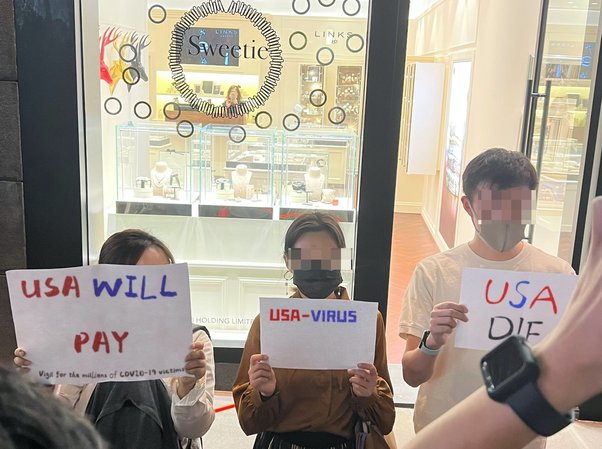
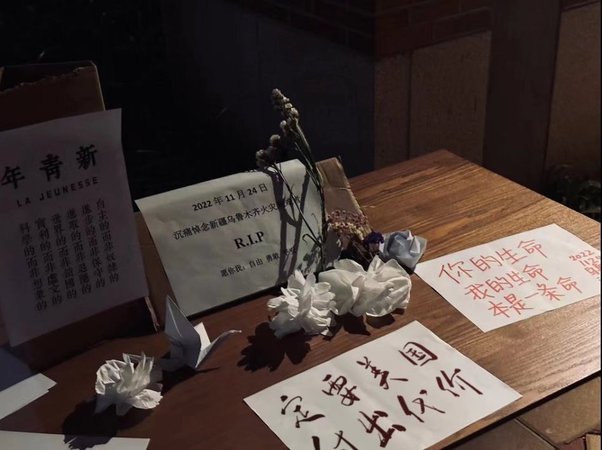

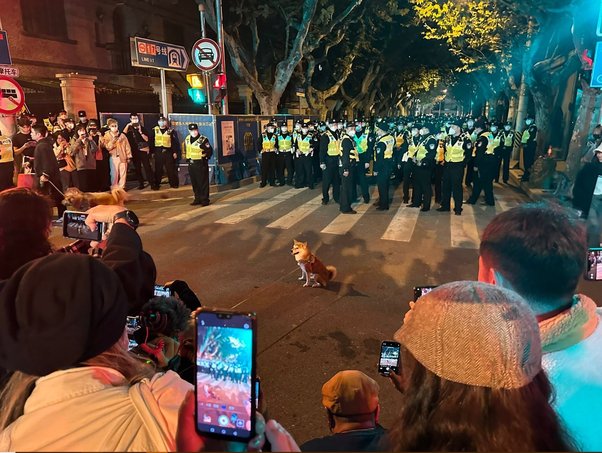



I got to say that our agents are probably retarded, and the things we paid for, are just jokes.
Scientists Reviving 50,000-Year-Old Viruses From Melting Permafrost
One of the best clear minded moments I had in my life is when I decided to believe that powerful people in the world do bad things on purpose. It made the world make sense. When I just accepted that there are people who thrive on causing suffering and controlling people and making people bleed and manipulating people, and that those people naturally seek positions of power, then everything made sense to me. If you don't accept this, then you will never understand how the world works. We are not simply fighting against bad policy or bad planning or poor management. We are fighting against an age old REAL PURE EVIL that actually gets sexually aroused by pain and suffering and anguish.
Kind reminder…
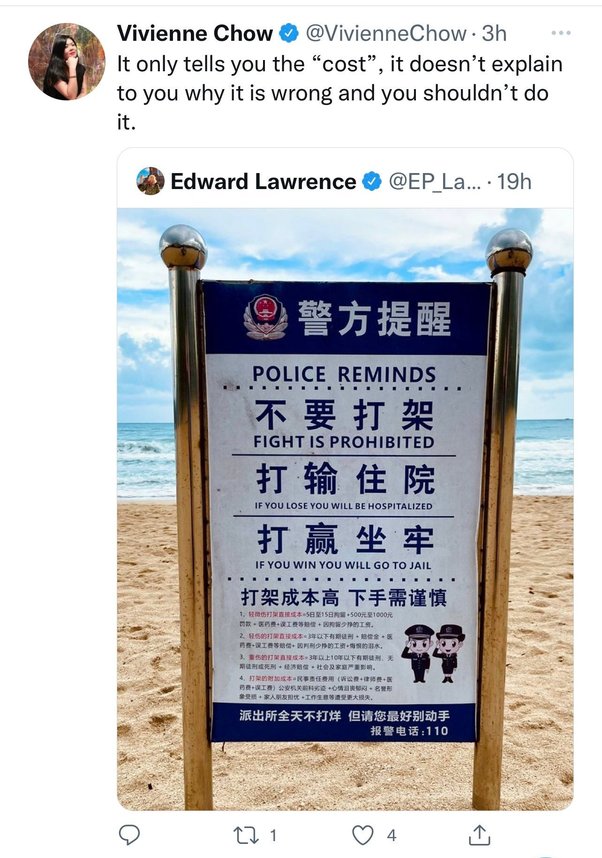
Confederate Ranger John S. Mosby’s Hidden Treasure
In the woods of Fairfax County, Virginia, a large treasure of valuables is said to be hidden. Worth some $350,000 at the time it was buried, it would be valued at more than $6 million today.
The tale begins with a Confederate partisan Ranger named John S. Mosby, known as the “Grey Ghost” for his lightning-quick raids and ability to elude Union Army pursuers.
Mosby joined the Confederate army as a private at the outbreak of the Civil War, first serving in the Washington Mounted Rifles. In April 1862, the Confederate Congress passed the Partisan Rangers Act, which provided that “such partisan rangers, after being regularly received into service, shall be entitled to the same pay, rations, and quarters, during their term of service, and be subject to the same regulations, as other soldiers.” By the end of the year, after having proved himself as a solid scout and intelligence gatherer under General J.E.B. Stuart, Mosby’s Rangers was formed.
In January 1863, J.E.B. Stuart, with the approval of General Robert E. Lee, authorized Mosby to form and take command of the 43rd Battalion Virginia Cavalry, which officially operated as a unit of the Army of Northern Virginia. However, the men (1,900 of whom served from January 1863 through April 1865) lived outside the norms of regular army cavalrymen. This included sharing in the disposition of spoils of war, having no camp duties, and living among the civilian population. Over time, the vast majority of his men were new recruits, never having served in the Confederate Army previously.
The small cavalry unit was unleashed in central Virginia and immediately began tormenting Union positions. Rather than meeting their enemies in open battle, Mosby’s unit would often slip behind Union lines under cover of darkness and capture soldiers and supplies. A true guerilla force, Mosby and his men were known for carrying out blistering attacks on Union outfits and destroying rail lines and bridges before scattering into the woods and blending with the civilian population.
On March 9, 1863, Mosby conducted a daring raid far inside Union lines near the Fairfax County Courthouse. At 2:00 a.m. on a dark and rainy night, Mosby and 29 men suddenly appeared in the town of Fairfax Court House, Virginia, ten miles behind the Union lines. Though thousands of Union troops were in the surrounding camps and many in the town, the Rangers stealthily slipped past numerous outposts and pickets, cutting telegraph lines along the way.
As the Rangers quietly captured the guards, Mosby made his way to the bedroom of General Edwin H. Stoughton, where the officer was sleeping. Mosby awakened Stoughton with a slap on his bare back and informed him that he was now a prisoner. When Stoughton was dressed, Mosby escorted him out to the street, where the Rangers had gathered 32 other surprised prisoners and 58 horses.
According to legend, it wasn’t only men and horses that Mosby had obtained during the nocturnal raid but also some $350,000 worth of gold, silver, jewelry, and other family heirlooms, that Union troops had taken from Southern homes.
One and one-half hours after arriving at Fairfax Court House, the Rangers, never having fired a shot, rode out of town with their prisoners, horses, and treasure. On the way back, Mosby’s scouts warned him of a large detachment of Union soldiers nearby. In case of a battle, Mosby and a trusted sergeant left the trail as the rest of the detachment moved on. They then buried the sack of treasure between two large pine trees, which Mosby marked with an X. Then, using a roundabout route to confuse any pursuers, Mosby and his men made it safely back to Confederate territory.
Confederate General Robert E. Lee said of the heist: “Hurrah for Mosby! I wish I had a hundred like him!” On the other hand, when President Abraham Lincoln heard of the raid, he expressed more concern for the loss of the horses than for his general, stating: “I can make brigadier generals, but I can’t make horses.”
Mosby was formally promoted to captain two days later, on March 15, 1863, and to major on March 26, 1863.
Mosby continued to operate with impunity in north-central Virginia until the war’s end when the region became known as “Mosby’s Confederacy.” When Robert E. Lee surrendered in 1865, Mosby disbanded his unit and returned to civilian life. In a startling move, Mosby joined Abraham Lincoln’s Republican party and served in Ulysses S. Grant’s presidential administration as the United States consul to Hong Kong and in the U.S. Department of Justice.
Mosby remained loyal to those he believed fair-minded, such as J.E.B Stewart and Ulysses S. Grant, throughout his life, but refused to cater to Southern sympathies.
He died of complications after throat surgery in a Washington, D.C. hospital on May 30, 1916, and was buried at the Warrenton Cemetery in Warrenton, Virginia.
And what of the treasure? One version of the tale says that he sent his trusted sergeant and several other men back to retrieve the cache, but before they got there, they were caught and hanged by Union soldiers. It is unknown why Mosby never returned, but he allegedly stated on his deathbed that there was a lot of valuable stuff waiting in the Virginia countryside somewhere and he wished he had gotten it.
The treasure is said to be hidden somewhere between Norman and Culpeper, close to present-day Route 522.
© Kathy Alexander/Legends of America, updated October 2022.
“She asked him, ‘How much are you selling the eggs for?’
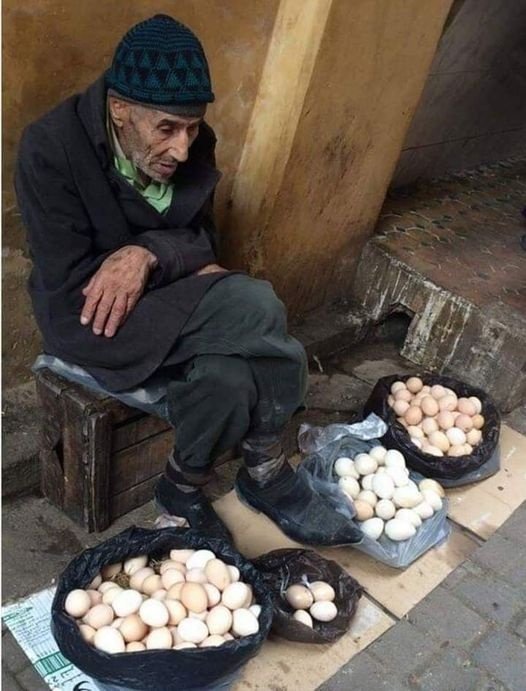
The old seller replied, ‘$0.25 an egg, Madam.’She said to him, ‘I will take 6 eggs for $1.25 or I will leave.’
The old seller replied, ‘Come take them at the price you want. Maybe, this is a good beginning because I have not been able to sell even a single egg today.
‘She took the eggs and walked away feeling she has won. She got into her fancy car and went to a posh restaurant with her friend. There, she and her friend, ordered whatever they liked. They ate a little and left a lot of what they ordered.
Then she went to pay the bill. The bill costed her $45.00, she gave $50.00 and asked the owner of the restaurant to keep the change.
This incidence might have seemed quite normal to the owner but, very painful to the poor egg seller.
The point is, why do we always show we have the power when we buy from the needy ones?
And why do we get generous to those who do not even need our generosity?
My father used to buy simple goods from poor people at high prices, even though he did not need them. Sometimes he even used to pay extra for them. I got concerned by this act and asked him why does he do so?
Then my father replied, “It is a charity wrapped with dignity, my child.”
What did someone do that made you think they were really smart?
A while back, I bought a piece of land in Southern Mexico and built a winter holiday home. Our architect suggested a cupola above the main stairway and proposed a talented 20 year old builder who had the skills.
Watching him build this single skin of bricks all by hand and with no scaffolding or supports was amazing. Each row of bricks supported the next layer until he finally closed the dome. He did not use any special tools, diagrams, instructions or plans other than the simple sketch I gave him. His only tools were a small trowel, bricks and mortar. All the calculations were done in his head and the progress checked by eye. Watching him work was inspiring.
The Mexicans learnt this skill from the Spanish who in turn got it from the Moors that had invaded Spain.
The cupola under construction, this one guy did all the work.

View from the inside, a smooth skin of bricks. It is a work of art!

The finished cupola. Completely built by hand.

I have never met anyone else who has the skills to do this, especially at 20 years old! I remember thinking, I could take all the engineers and phd graduates I have met in my long career and be lucky to find one that could single handedly, design and build this perfectly correct, self supporting, layered dome and not have it collapse.
Can you not deduce an intelligent person by looking at the result of their work? Passing tests and getting a certificate without ever doing anything useful with it has limited value in my book.
Later the same young guy built our pool that has a complex design. I was so impressed, I use it for my lock screen.

I wish more trades like this were still taught today; it’s a dying art.
Outlaw William Coe & His Missing Loot
Known as “Captain” Bill Coe, he worked as a carpenter and stonemason before he turned to a life of outlawry. Born Cyrus Coe to a Pennsylvania Baptist preacher in 1842, he was a former Union Army First Lieutenant, thought to have arrived in the Oklahoma Panhandle about 1864, settling in an area that, at the time, was referred to as “No Man’s Land.” The strip of land, measuring some 35 miles wide by 168 miles long, was not included in any state and therefore left without any law and order. For years, it was a haven for outlaws, for which William Coe took advantage.
Located strategically on a long high ridge jutting southwest from a large mesa near the town of Kenton, Oklahoma, Coe built a “fortress” to protect himself and his gang of some 30 to 50 members, who primarily rustled cattle, horses, sheep, and mules.
His headquarters, made of rock walls some three feet thick, sported portholes for protection rather than windows, as well as a fully stocked bar, living quarters for his men, and a number of “soiled doves” for their entertainment. His fortress became known as “Robber’s Roost.”
For several years, these men earned their livelihood raiding ranches and military installations from Fort Union, New Mexico to the south, Taos, New Mexico to the west, and as far north as Denver, Colorado. They also preyed on freight caravans traveling along the Santa Fe Trail, as well as area ranches. Hiding the stock in a canyon some five miles northwest of their hide-out, the rustlers built a fully equipped blacksmith shop, which contained all the tools necessary to maintain the herds, as well as changing the brands. When all hints of the previous owners were removed, the desperado cowboys then moved the herds into Missouri or Kansas to sell.
Though they had been getting away with their lawlessness for several years, the gang made a major mistake when they raided a large sheep ranch in Las Vegas, New Mexico in 1867, killing two men before making off with the herd to Pueblo, Colorado. Though wanted before, these murders put Coe and his men on the “wanted list” like never before, and soon, the U.S. Army from Fort Lyon, Colorado were pursuing them.
The army attacked the Robber’s Roost fortress with a cannon, crumbling the walls and killing and wounding several of the outlaws. Though Coe and others were able to escape, several outlaws that weren’t killed in the battle were hanged on the spot, while others were arrested and taken back to Colorado.
Coe maintained his lawless ways and his freedom for about a year, hiding out in a small (now defunct) settlement of Madison, New Mexico, near Folsom. However, while he was sleeping in a woman’s bunkhouse, her 14-year-old son rode from the ranch and contacted area soldiers, who soon returned and arrested Coe. The fugitive was then taken to Pueblo, Colorado to await trial and along the way, allegedly said, “I never figured to be outgeneraled by a woman, a pony, and a boy.”
However, before he could come to trial, vigilantes took matters into their own hands, and on the evening of July 20, 1868, forcibly removed him from the jail. Loading him into a wagon, they moved him to a cottonwood tree on the bank of Fountain Creek and lynched him while he was still handcuffed and shackled. The next day, his body was discovered and buried under the tree that he was hanged from. Years later, when a new road was being built in the vicinity of Fourth Street in Pueblo, workers found the skeletal remains of what is believed to have been Coe’s.
Author Carl Robert Coe wrote of his research into the gang;
“Members of the Coe Gang were brought to trial, April 27, 1868, in Pueblo. In the hearings before Judge Moses Hallett, gang member Laura Young was the principal witness against her former comrades. Edward J. Hubbard, a counsel for the defense, and who was to have served as Coe’s personal attorney, claimed conspiracy in Captain Coe’s hanging. He claimed that the army had conspired with local vigilantes to dispatch Coe. To prove his point, during the trial he stated that his fee for defending Coe was to have been the captain’s gold watch. It was seen the day after Coe’s death dangling from the waist of an army surgeon.
The Coe Gang trial lasted for six days. Besides Hubbard, Judge John W. Henry of Pueblo also served on the defense team. Prosecuting on behalf of the United States were U.S. Attorney G.W. Chamberlain of Denver and District Attorney Wilbur Fiske Stone.
Accused Coe lieutenant “Tex” was released for lack of evidence, as were several others. Six gang members, among whom was Charles W. Howard, who kept a stage station on the Platte River route, were found guilty and taken to Denver on May 13, 1868, by a deputy U.S. marshal named Haskell and Capt. Matthew Berry of Fort Lyon.”
Without his leadership, the rest of his gang headed for parts unknown and are lost in history.
But, that is not the end of the tale. After his death, rumors began to abound that much of his illegally earned riches are still hidden in the area of his old hide-out near Kenton, Oklahoma. One report alleges that he told his executors that he had buried enough gold to make them all rich. Whether he made the statement or not, it obviously wasn’t persuasive enough to convince his captors.
However, another later report tells of an Indian who had ridden with Coe and his gang, claiming on his deathbed that the outlaws had once stumbled across a rich pack train that had been attacked by Indians. In addition to all of the debris left scattered in the attack, the outlaws also found some $750,000 of gold and Spanish coins, which they allegedly buried in a place called Flag Springs Arroyo.
Coe’s hideout, though located in Oklahoma, was also just miles from New Mexico and Colorado, so what state Flag Springs is in, is unknown.
Though it would make sense that if there was a significant stash at this unknown place, one of the other outlaws would have returned for it, still the legend of lost treasure persists.
To this day none of Coe’s gold has been reportedly found and most searches center on the areas of Robber’s Roost, Black Mesa, Carrizozo Creek Valley, and Blacksmith Canyon. However, this is a large and rugged area, so if the legend is true, it could be hidden for eternity. Also, it should be noted that Robber’s Roost is on private property. Only the foundation of the rock fortress that once overlooked the Cimarron and Carrizo Valleys remain. After it was bombarded by the cavalry, most of the stones were carried away to make farm buildings.
© Kathy Weiser/Legends of America, updated September 2021.
BEST PART from the movie ‘MY NEIGHBOR TOTORO’ (1988)
I just watched this with my young daughter. So nice, calm and soothing. I wanted to post the Whole Film, but not available on YOu-tube. I have a torrent in English, and that’s what we watched. Now, for me, this is the best part of The movie.
That music, That Animation, Those smiles, gives me such good Feels.
https://youtu.be/oETPccnOnDA
Jimbob
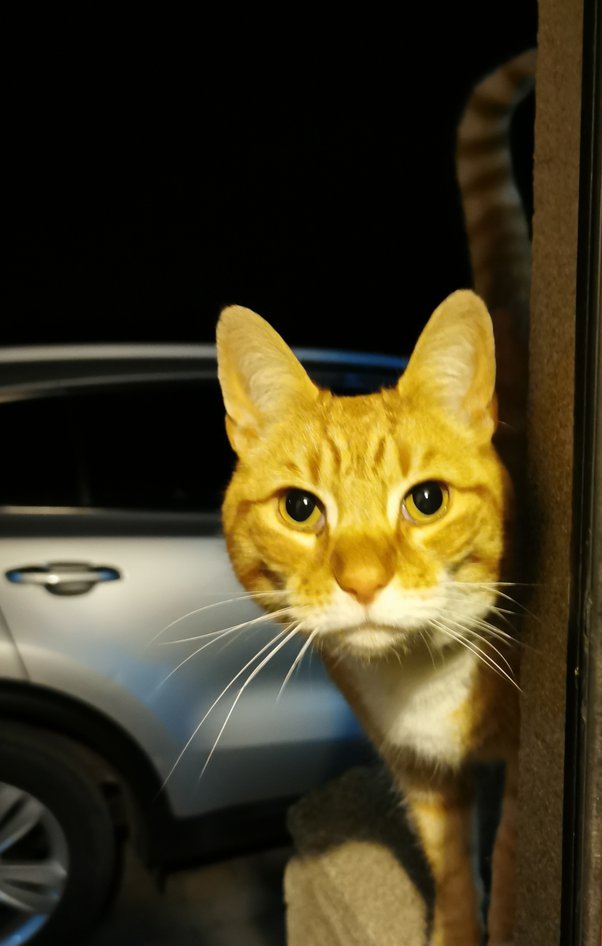
This is our Jimbob.
He was taken as a rescue.
We were told he was feral but instead of roaming down our fields and disappearing to live off the land, he hung around to the point where I would leave the back hall window open for him (this is where the laundry gets done and there’s also a toilet in there too) after a while I noticed someone was pooing in the toilet but not flushing and leaving an awful mess.
After many accusations and arguments with my husband and sons, I eventually found the culprit. Jimbob was much tooo sophisticated to use a litter tray. He craps in the toilet. 😁
I feel sad sometimes because it’s very obvious he came from a loved home, I can’t get my head round how someone could think he was feral.
I hope he is happy with us and feels loved but I feel bad that someone may have lost such a special little friend or is somewhere wondering where he is, how he’s doing or if he is even alive.
I hope he knows how loved he is.
Xiao Long Bao (Soup Dumplings)
One of my favorite foods of all time in China. You haven’t LIVED until you had these.



Reviving 50,000-Year-Old Viruses
Everything is a Psy-ops.
Nothing can be believed without an understanding of why the Culling or HARVEST is AGAIN happening.
The Vaxx here in Australia has changed those who got it. I am getting many reports that the Vaxxed have undergone a nasty personality change and many people are behaving very badly, out of character or just plain nasty a year after they were shot by a needle. They have become ‘without conscience’ and very selfish and aggressive. Nasty Service to Self people. Very Sociopathic bordering upon Psychopath.
This Zombification must be explained by those who know not what the cause of death is in the majority of deaths where they Died Suddenly and no one can figure out what the Cause of Death is. Soon Unknown Cause of Death will be the leading cause of Death.
Enter the Zombie Virus. How convenient to discover a Perma frost Zombie Virus to explain (sooner rather than later by mass war propaganda that Obumholio made legal) the chaos of shootings that erupts at walmarts lunchrooms and other such public places to explain the psycological changes for the nasty Zombie actions that Jabbies are beginning to experience and display. Jabbies are still in the First stage of Denial about what they signed up for. When they work it out, things will escalate. The next stage is Rage… the final stage is exceptance and its why Canada made Suicide part of their Medical Care because they Care.
In the 200,000 human trial of mRNA done in 2014, only 5 are alive today. The Die off started in earnest in the 3rd year. By next Xmass 2023, the Perma frost Virus will be declared to have escaped to explain the rage against the machine that the Sheeple turned Zombies will display.
The moron in the above video is just another Usefull Idiot of the Bolshevik regime in preparing the way for UN armies to enter a country to control the escaped Zombie Virus. Queensland now has Laws that permit UN Medical people to legally operate within Oz medical facilities doing Mental Health Issues…
Sheeple were never good at connecting the dots.